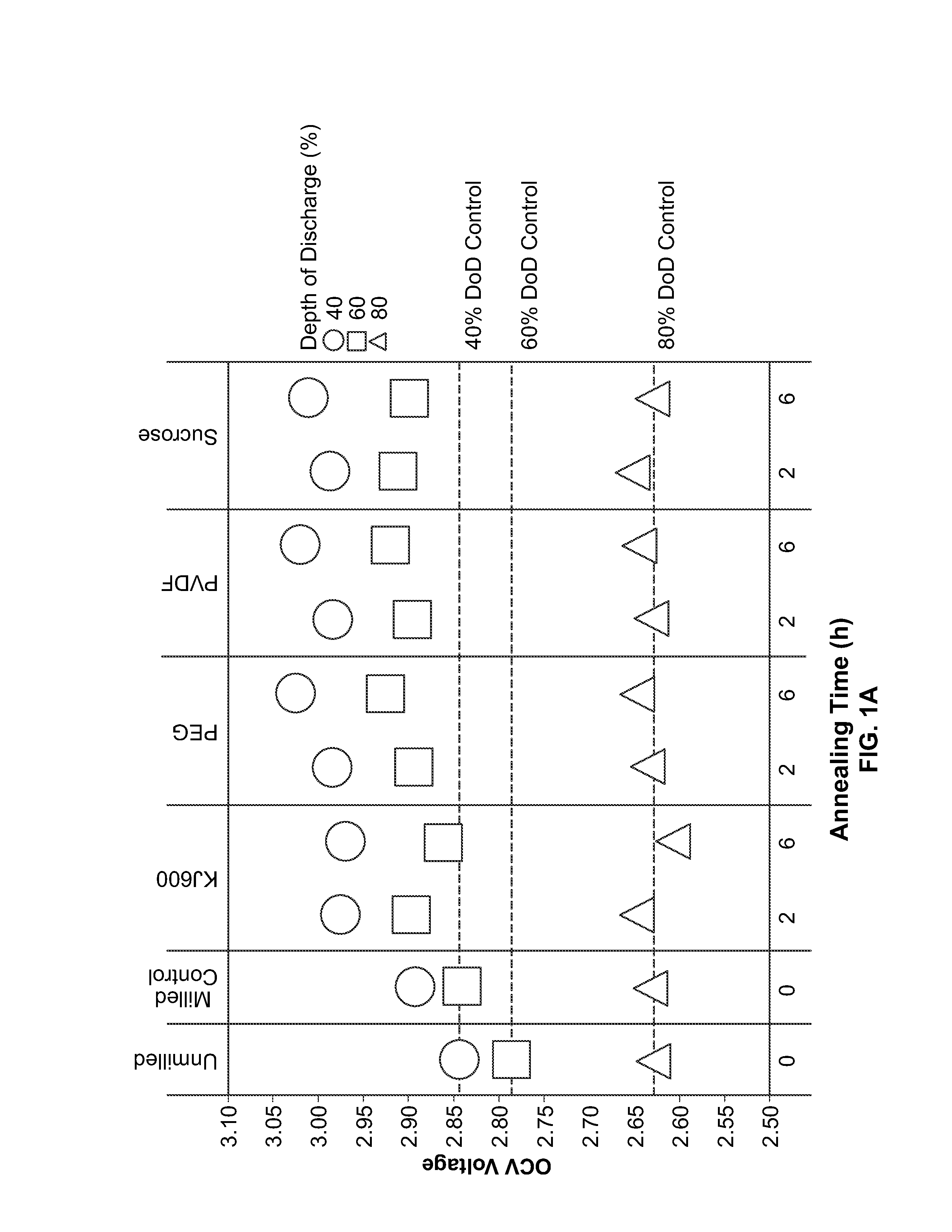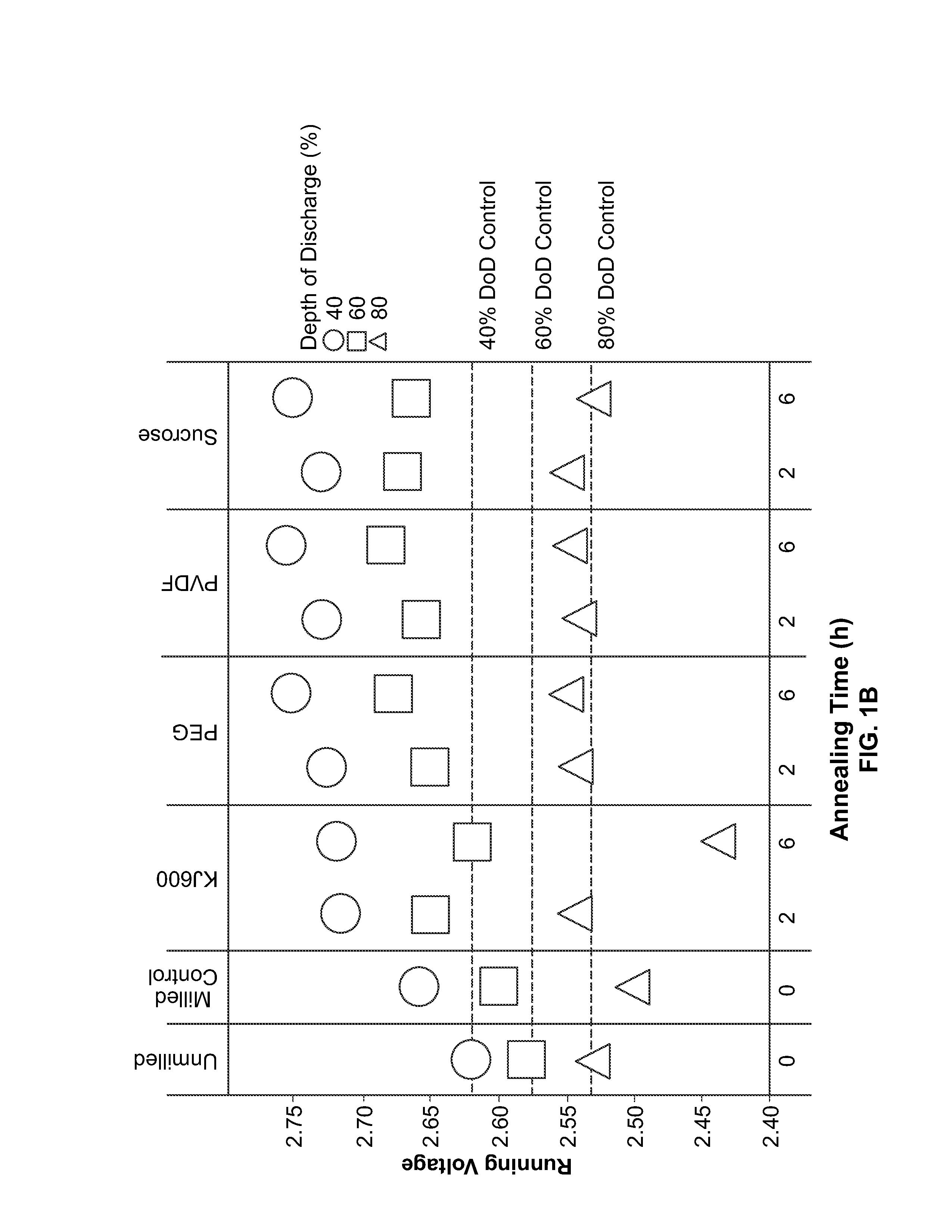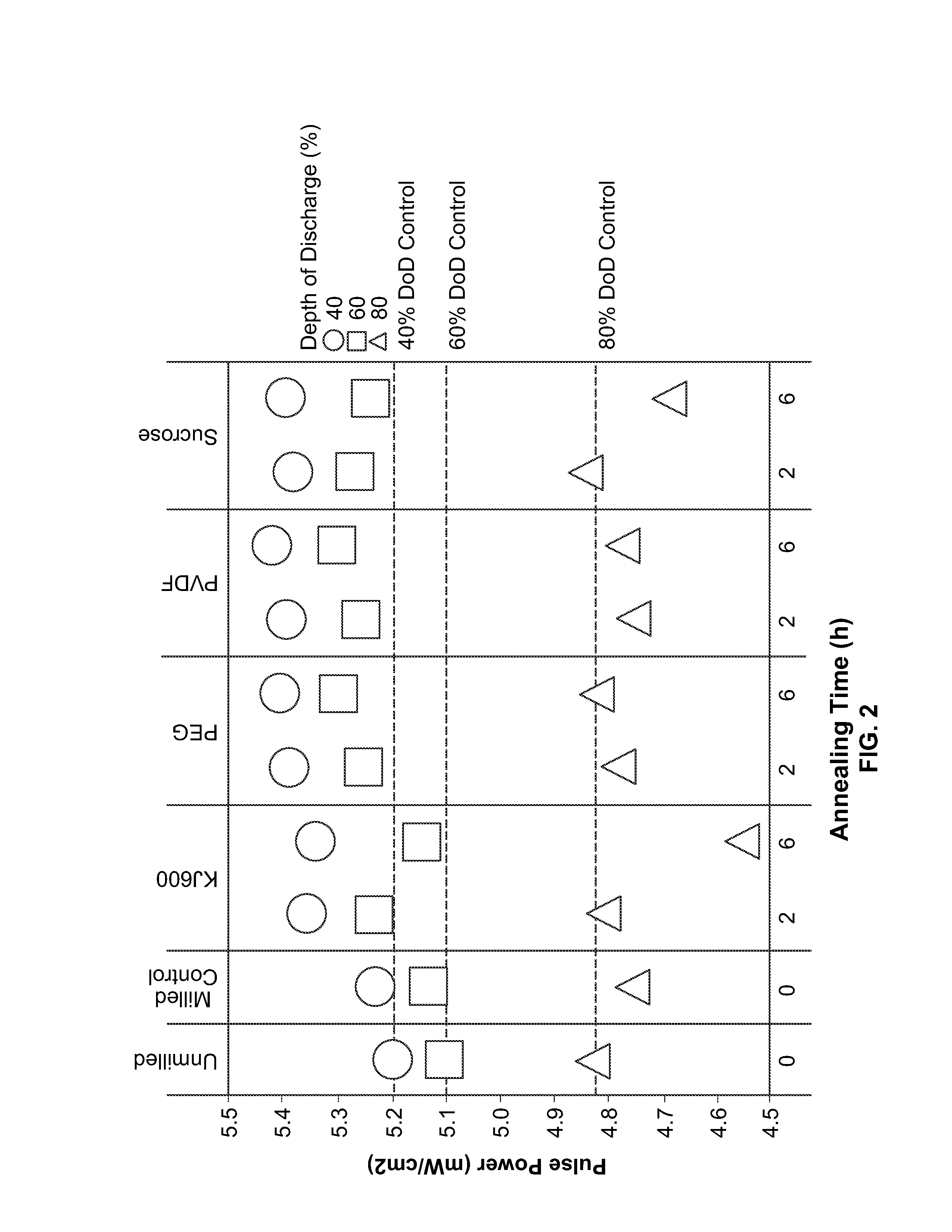Cathode for a Battery
- Summary
- Abstract
- Description
- Claims
- Application Information
AI Technical Summary
Benefits of technology
Problems solved by technology
Method used
Image
Examples
example 1
Fabrication of Conductively Coated Electrodes from Carbon Precursor Materials
[0078]Materials and Synthetic Methods.
[0079]Carbon-fluoride active material was milled with carbon precursors at medium energy, followed by post annealing. Carbon precursors included KJ600 (carbon black), PEG, PVDF, and sucrose. The carbon precursor loading was 5 wt %. The annealing conditions were 450 and 600 degrees C. for 2 and 6 hours.
example 2
Fabrication of Conductively Coated Electrodes with and without Additive Materials
[0080]Methods were the same as in Example 1, with the following changes:
[0081]Poly(vinylidene fluoride) was used as a carbon precursor; the carbon precursor loading had three conditions (1, 3, 5 wt %); the annealing conditions were 450 and 500 degrees C. at 3, 6 and 12 hours.
example 3
Fabrication of Conductively Coated Electrodes from Conjugated Core Compounds
[0082]Materials and Synthetic Methods.
[0083]All reactions were prepared in a high purity argon filled glove box (M-Braun, O2 and humidity contents <0.1 ppm). Unless otherwise specified, materials were obtained from commercial sources (e.g., Sigma-Aldrich, Advanced Research Chemicals Inc., and Alfa Aesar) and used without further purification.
[0084]Carbon Coating.
[0085]CFx, LMO and LMNO particles were coated with conductive carbon materials through a milling process. Milling vessels were loaded with the base cathode material, conductive carbon coating precursor materials, and solvents. The conductive carbon coating precursor materials are loaded in a range of 0-5 wt %. The vessels were sealed and their contents then milled. After milling, solvents were evaporated at about 60 degrees C. and, in certain embodiments, samples were annealed under flowing N2.
[0086]Electrode Formulation.
[0087]In the case of coated C...
PUM
 Login to View More
Login to View More Abstract
Description
Claims
Application Information
 Login to View More
Login to View More - R&D
- Intellectual Property
- Life Sciences
- Materials
- Tech Scout
- Unparalleled Data Quality
- Higher Quality Content
- 60% Fewer Hallucinations
Browse by: Latest US Patents, China's latest patents, Technical Efficacy Thesaurus, Application Domain, Technology Topic, Popular Technical Reports.
© 2025 PatSnap. All rights reserved.Legal|Privacy policy|Modern Slavery Act Transparency Statement|Sitemap|About US| Contact US: help@patsnap.com



